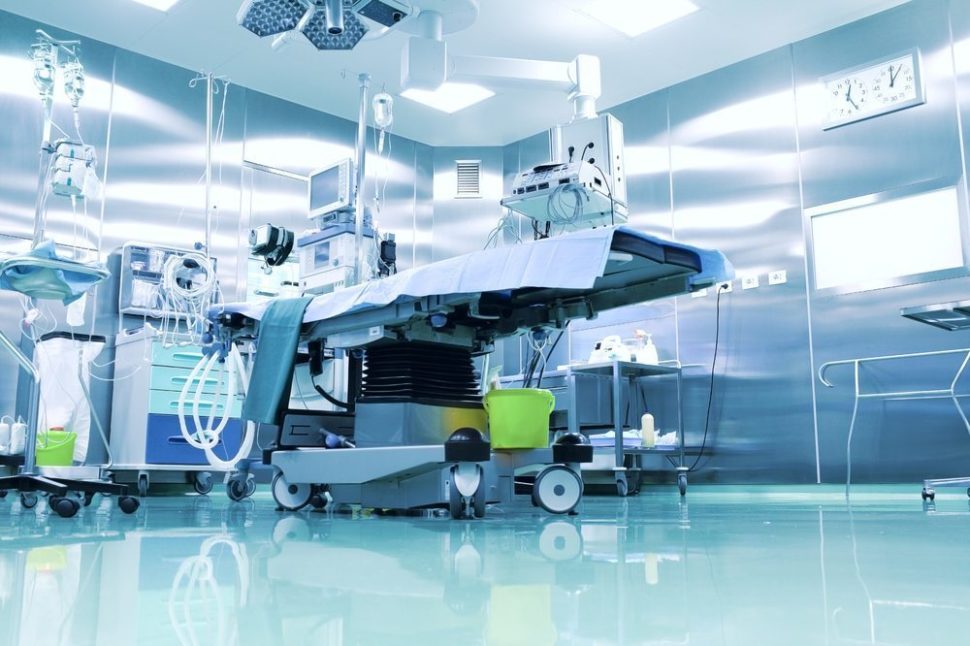Although the antimicrobial properties of silver and copper have been known for some time, new technologies enable these metals to be used in every facet of healthcare. These materials outperform plastic and wood in inhibiting bacterial growth, but at what cost?
In 2013, it was estimated that healthcare-associated infections (HAIs) occur 1.7 million times annually, with nearly 99,000 fatalities associated with these infections. Many times, the bacteria that cause these infections, which can include Staphylococcus aureus (MRSA) and E. coli, among others, are contracted from coming in contact with surfaces once touched by an infected patient.
Where Healthcare-associated Infections Come From
Healthcare objects, ones either used in treatment or present in the patient’s room, can be distinguished between critical, semicritical, and noncritical items.
Critical items, which include surgical items and catheters, are objects that enter sterile tissue or the vascular system and must be sterilized constantly as their use runs a high risk of infection.
Nanosilver materials can inhibit bacteria growth - no more smelly socks.Click To TweetSemicritical items must be sterilized between use, they come in contact with mucous membranes, and they include things like anesthesia equipment and bronchoscopes.
Noncritical items come in contact with the skin but not mucous and include bedpans, stethoscopes, bedrails, table and lavatory surfaces.
There are numerous studies on the presence of HAI-causing bacteria in bath basins, hospital beds, uniforms, and even on medical charts.
Although silver is already in use in many of these objects, which we’ll touch on in a bit, the most common material used for these items is plastic. Many experts argue that by using silver, copper, and other antimicrobial materials instead of plastics could lower the occurrence of healthcare-associated infections.
The use of Plastics in Healthcare
Plastics are everywhere and have been crucial to much of humanity’s modern scientific advances. Despite health concerns from human exposure to bisphenol A (BPA) and di-(2-ethylhexyl)phthalate (DEHP), plastic is cheap and requires little energy to produce. In fact, 300 million metric tons of plastic is produced each year, and roughly half of that is disposed of within a year of production.
The waste factor notwithstanding, plastic is also far less resistant to microbial growth than silver or copper.
So the solution seems simple. Replace plastics with silver or copper and the environmental impact and risk of healthcare-associated infections diminishes, right?
Not exactly.
Metal Antimicrobial Properties Should be Treated Like Antibiotics
Nanosilver textiles are already in use by hospitals, coming in both disposable and reusable versions, which University of Wisconsin-Madison engineering professor Andrea Hicks took a closer look at.

Professor Hicks used life cycle assessment, a common tool for modeling the energy required to produce, maintain, and dispose of a given product. In this case, Hicks’s team studied nanosilver-coated reusable vs. disposable hospital gowns. “Embodied energy” is a common metric used to compare environmental impact.
Given that the reusable gown needed to be applied with more nanosilver solution after each laundering, the team ensured that enough silver was present to inhibit the growth of E. coli. The team found that after 12 uses the reusable gown had a smaller environmental impact than the disposable gown.
There is still environmental impact, however, as certain forms of silver like ionic silver can harm fish and other aquatic life after it is reentered into streams from water treatment plants.
This shouldn’t be the biggest concern regarding use of nanosilver, argues University of Technology Sydney researchers.
Dr. Cindy Gunawan of UTS, nanobiologist, says that the commercialisation of nanosilver materials should raise “alarm bells.” Leading an investigation into nanosilver medical devices, Gunawan argues that the use of these materials will give rise to a nanosilver resistance that would spread to microorganisms in the human body as well as the environment.
“Nanosilver is a proven antimicrobial agent whose reliability is being jeopardized by the commercialisation of people’s fear of bacteria,” Dr. Gunawan said. “Our use of it needs to be far more judicious, in the same way we need to approach antibiotic usage. Nanosilver is a useful tool but we need to be careful, use it wisely and only when the benefit outweighs the risk.”
One has to wonder if specialized nanosilver fabrics, like the one detailed here and published in a 2014 edition of the journal Advanced Functional Materials, do enough to mitigate the environmentally harmful release of silver ions. Furthermore, how would the slow release of silver ions also reduce the bacteria’s ability to form a resistance to silver?
How should we balance the struggle against healthcare-associated infections and a need to reduce environmental impact?










Comments (0)
Most Recent